The XPG Cybercore II 1300W ATX 3.0 PSU Review: A Slightly More Modest High-End PSU
by E. Fylladitakis on July 14, 2023 8:00 AM EST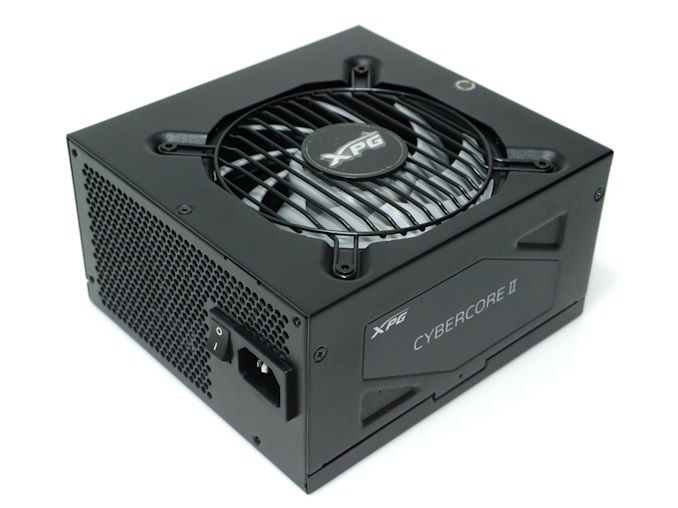
Thus far in our ongoing look at the first generation of ATX 3.0 power supplies, we've seen a lot of high-end units from both the big names and smaller names in the power supply industry. But those flagship, high capacity power supplies have also tended to fetch pretty hefty prices in the process. For better or worse, power supply vendors have worked out that power supply buyers will bear quite a bit for top-of-the-line models, and these days it's rare to see a cheap flagship unit.
So what's a buyer to do when they still want a high-end power supply, but can't justify the cost of a flagship PSU? Thankfully, these days, we're seeing more and more high-end units hit the market that, although are not quite as over-the-top as their flagship counterparts, deliver much of the same quality without the over-the-top price tags. Often specced to meet 80Pus Platinum efficiency levels, these high-end units fill a much-needed spot between mass-market midrange units, and the uber-powerful flagship models.
Tying that to today's review, today we're looking at one such high-end design from XPG, the CYBERCORE II 1300W. Compared to the flagship Fusion series PSU we took a look at a couple of months ago, the CYBERCORE II family is a bit more modest – it's still high-end, but not to the tune of $750 for a power supply. As outstanding as the Fusion may have been, XPG knows that actual demand for such high-tier products is low and that the bulk of the market lies elsewhere, and this is where lines like the CYBERCORE II family come in.
True to its name, the CYBERCORE II PSU lineup is an upgrade of the previous CYBERCORE series, which XPG is in the process of supplanting. The CYBERCORE II series currently consists of just two units, rated at 1.0 kW and 1.3 kW respectively. On paper, there are very few differences between the CYBERCORE II and Fusion series, with the most prominent being the 80Plus certification (Platinum vs Titanium), the lack of a digital interface, and a reduced number of 12VHPWR connectors (one vs two).Even with some scaling back, the CYBERCORE II is still intended to be highly competitive within the broader high-end PSU market.
But, perhaps most importantly, the price tag of the CYBERCORE II units is less than half that of the respective Fusion units. This makes the series a very viable option for enthusiasts who are in the market for a very powerful PSU, but are not on a limitless budget.
| XPG CYBERCORE II 1300W Power Specifications ( Rated @ 50 °C ) |
|||||
| RAIL | +3.3V | +5V | +12V | +5Vsb | -12V |
| MAX OUTPUT | 25A | 25A | 108.33A | 3A | 0.3A |
| 130W | 1300W | 15W | 3.6W | ||
| TOTAL | 1300W | ||||
| 80 Plus Rating | Platinum | ||||
| AC INPUT | 100 - 240 VAC, 50 - 60 Hz | ||||
| MSRP | $320 | ||||
Packaging and Bundle
XPG supplies the CYBERCORE II 1300W PSU in a strikingly red cardboard box. The box itself is very sturdy and thick packaging foam protects the unit during shipping. Basic compliance and performance information can be found printed on the sides and rear of the packaging.
The CYBERCORE II 1300W PSU is a fully modular design, allowing for the removal of every DC power cable, including the 24-pin ATX connector. All of the cables are completely black, with the ATX, PCI Express, EPS, and 12VHPWR cables wrapped in nylon sleeving, whereas the Molex and SATA power cables are bare ribbon-like black wires.
Besides the typical AC power cable and four mounting screws, XPG also bundles several cable ties and a sheet with decorative stickers alongside the CYBERCORE II PSU.
| XPG CYBERCORE II | ||
| Connector type | Hardwired | Modular |
| ATX 24 Pin | - | 1 |
| EPS 4+4 Pin | - | 2 |
| EPS 8 Pin | - | - |
| PCI-E 5.0 | - | 1 |
| PCI-E 8 Pin | - | 10 |
| SATA | - | 12 |
| Molex | - | 8 |
| Floppy | - | 2 |
The XPG CYBERCORE II 1300W PSU
External Appearance
Externally, the XPG CYBERCORE II hardly stands out aesthetically, featuring a subtle matte all-black design without any extravagant modifications. Its chassis is 160 mm long, which is a bit longer than what the typical ATX design guide dictates, but also typical for high-output PC PSUs – and actually very compact for a PSU with such a high power output. A closer look also reveals that the fan is slightly smaller than what the vast majority of high-end PSU designs are using. If not for the punched triangular shapes on its sides and its stickers, one could easily mistake this unit for a run-of-the-mill PSU.
XPG placed the large sticker with the unit’s electrical specifications and certifications on the top side of the chassis. Simple decorative stickers featuring only the company and series logos can be found on both sides of the chassis, placed between two punched triangular shapes.
The rear side of the CYBERCORE II PSU is basic, with only the typical IEC C14 power connector and a regular on/off switch. There is a flat surface where a sticker or decoration can fit but nothing has been installed from the factory. The front side of the unit is littered with the connectors for the modular cables, with the EPS and PCI Express connectors covering more than half of the surface area. There was not much room left for a legend so XPG painted basic headers directly on the chassis and simple lines grouping each set of connectors.
Internal Design
As we mentioned before, the fan responsible for cooling the CYBERCORE II 1300W PSU is a bit smaller than the 135 mm fans we usually find in high-output units. The 120 mm fan inside the CYBERCORE II however is made by Nidec, one of the most reputable manufacturers across the globe. This particular model is a dual-ball bearing engine fan that Nidec certifies for 60.000 hours at 60°C, which is extremely impressive. It has a relatively high maximum speed of 2150 RPM and is partially covered by a plastic shield in an effort to manipulate airflow. The ball-bearing engine and the plastic shield will increase noise output when the unit is loaded. Still, XPG covers these units with a 10-year long warranty and, therefore, obviously had to focus on long-term reliability.
The OEM behind the creation of the CYBERCORE II PSU is Channel-Well Technologies, commonly known as CWT. It is the same OEM that was behind the first CYBERCORE series and the CYBERCORE II is based on a similar, but not quite the same, platform. This platform is a hybrid with a mix of digital and analog controllers, with the former controlling most of the unit’s major functions.
The filtering stage of the CYBERCORE II 1300W PSU is a little extended over typical units, with a total of six Y capacitors, two X capacitors, and two filtering inductors. There is two input rectifying bridges that have their own small heatsink sandwiched in between them. The APFC stage is monstrous, with two Rubycon 420V/680μF capacitors and two large inductors as its passive components, each connected to one converter. The circuitry forms two APFC converters that operate in parallel that, according to CWT, improve the electrical performance of the unit. The active components of the APFC circuit are placed on the large heatsink seen across the edge of the PCB.
Four Alpha & Omega TF29S50 transistors form a full-bridge inversion topology at the primary side of the unit. The large transformer output is connected to a vertical PCB with eight On Semiconductor power MOSFETs (5C612N) that generate the 12V rail. The 3.3V and 5V lines are being generated via the DC-to-DC conversion circuits found on a separate vertical PCB right next to the PCB housing the converters, which have been upgraded since the first version of the CYBERCORE series. Multiple shielded copper strips can be seen around the PSU, providing both electrical and electromagnetic isolation between the high-frequency components. Rubycon and Nippon Chemi-Con supply the electrolytic capacitors, while FPCAP and United Chemi-Con supply all of the polymer capacitors.


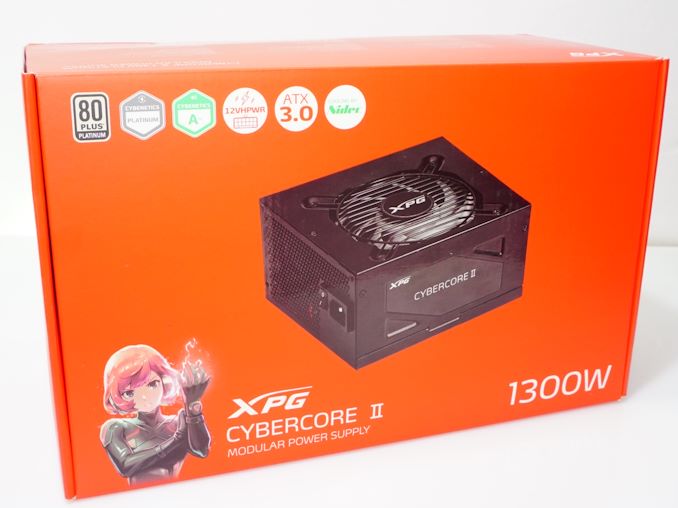
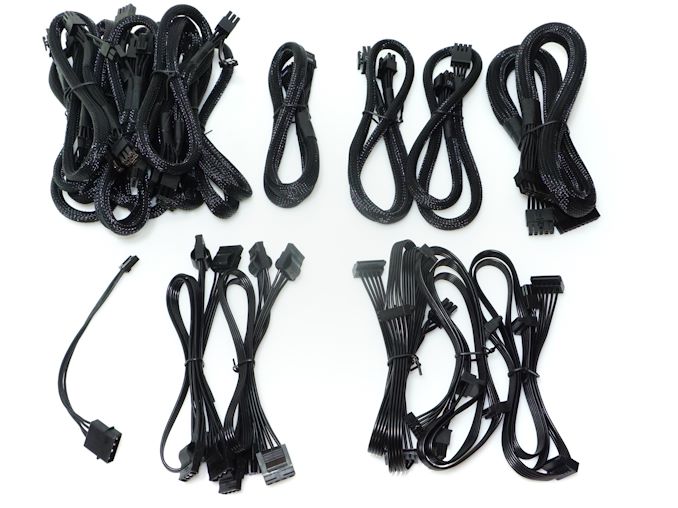
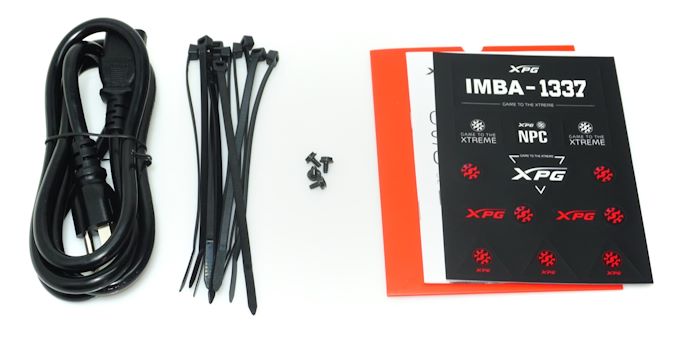

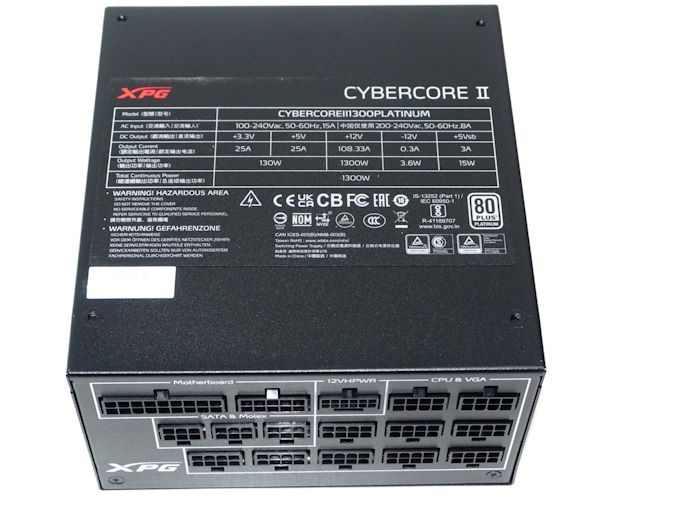
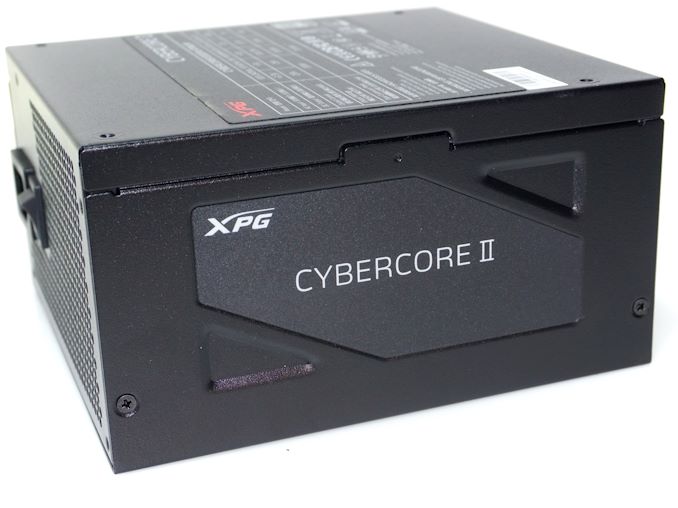
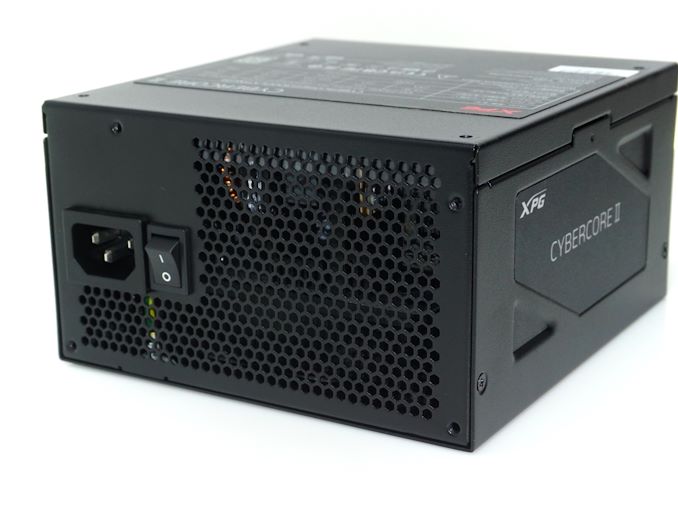
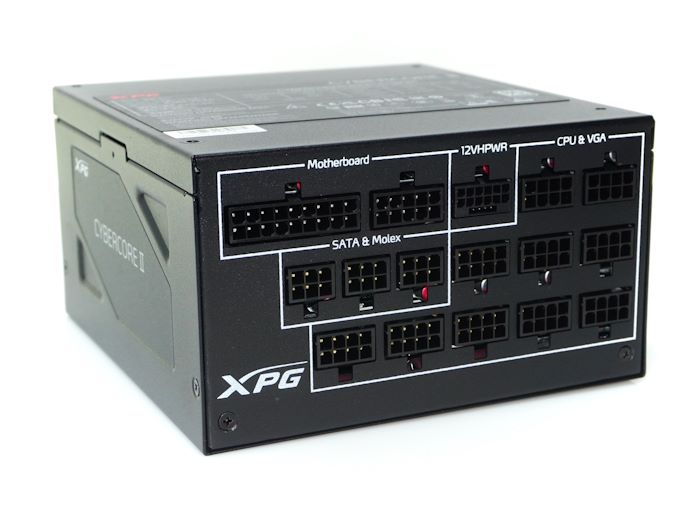
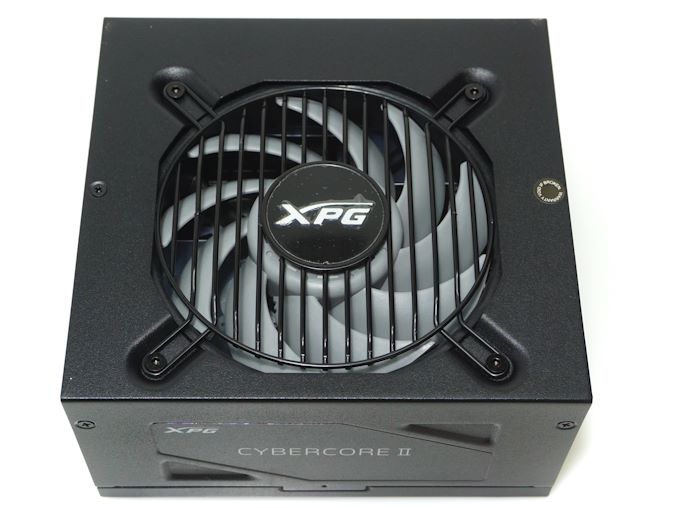
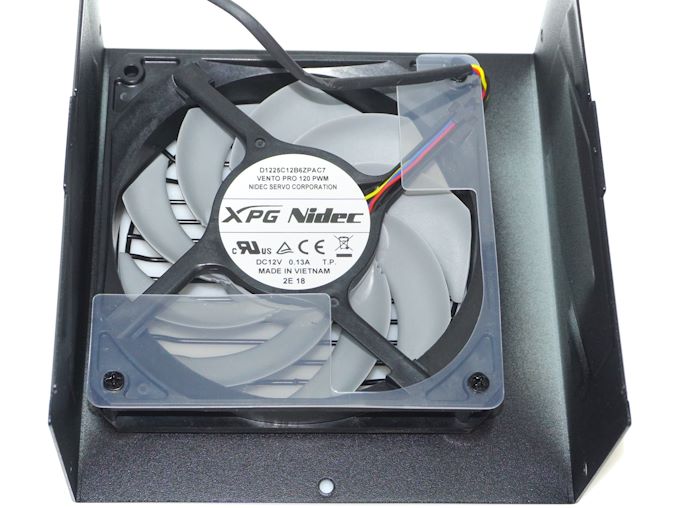
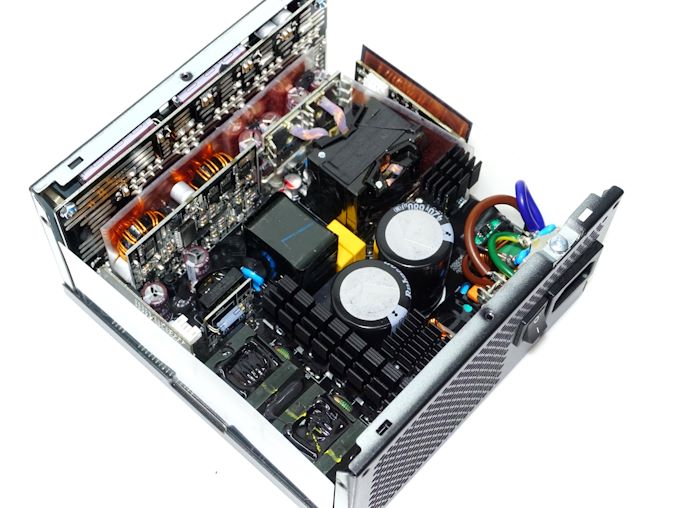
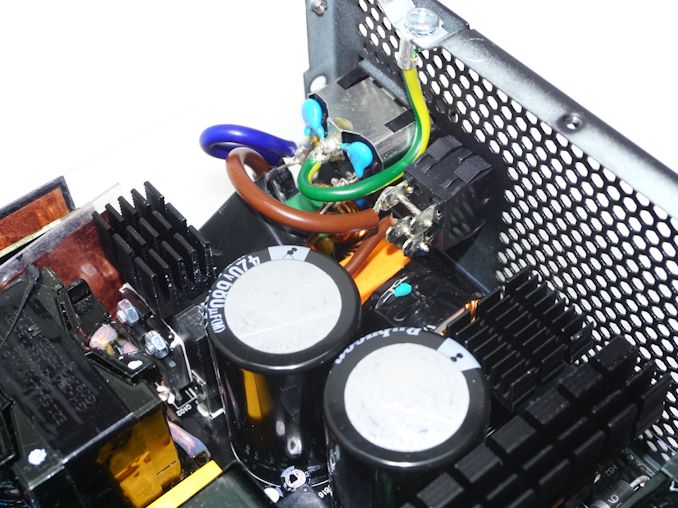
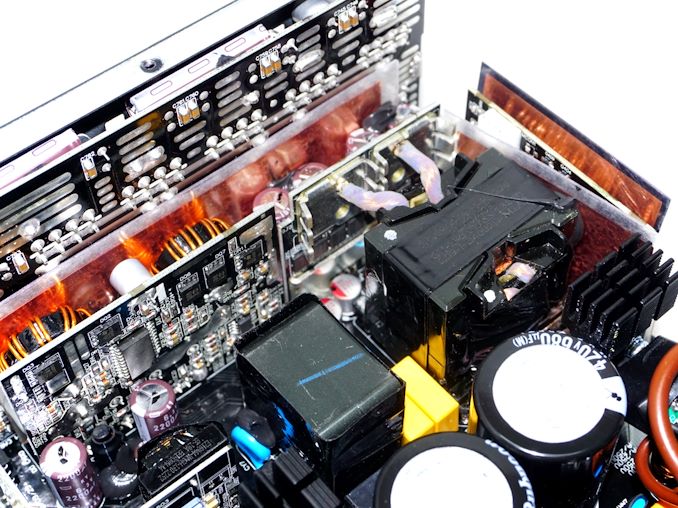
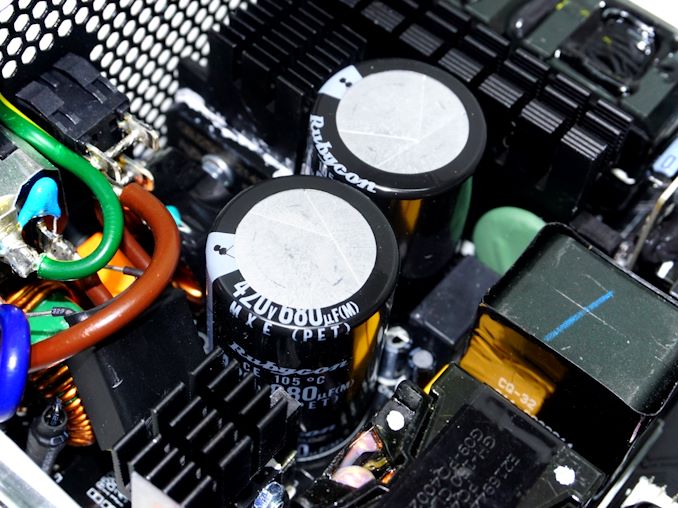
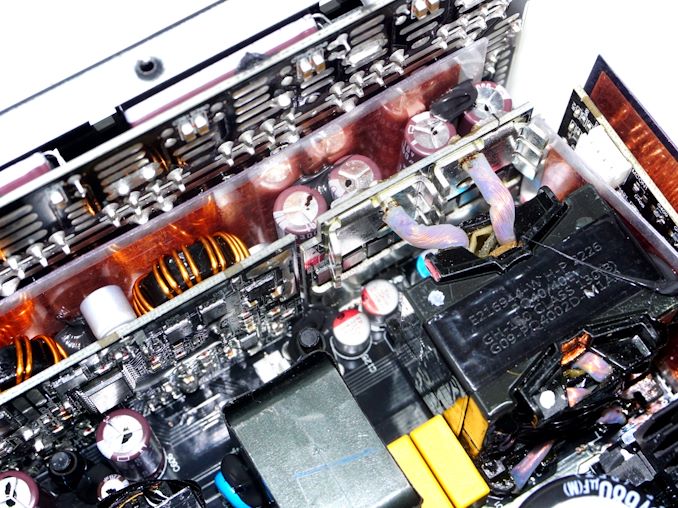
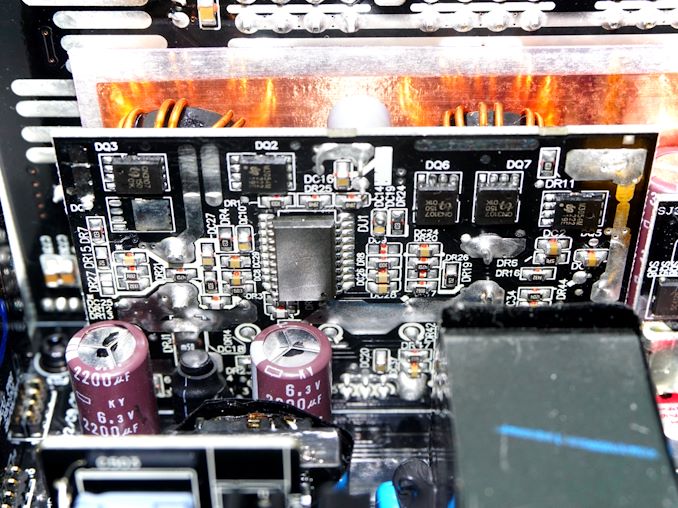
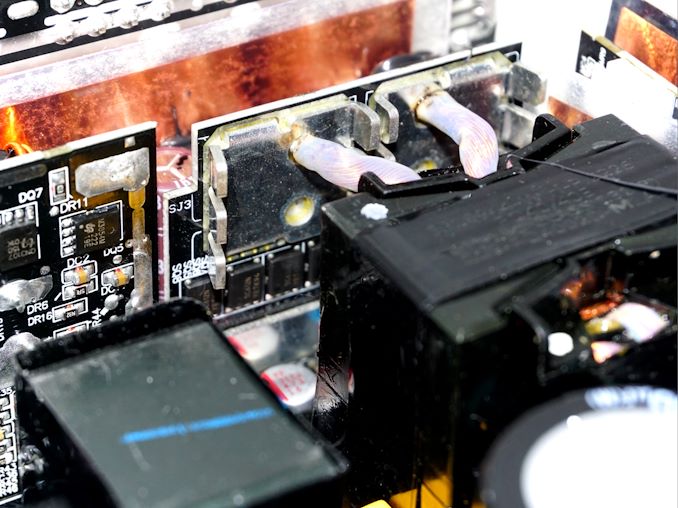








17 Comments
View All Comments
Purpose - Friday, July 14, 2023 - link
Wow, a power supply with a Gentle Typhoon in it.PeachNCream - Friday, July 14, 2023 - link
Reevaluation of your life choices might be a better idea than scrimping coin on a "cheaper" 1300W PSU. If you feel you genuinely need something that can deliver that much power to provide yourself with amusement there's absolutely a problem and it has nothing to do at all with computer components.Threska - Monday, July 17, 2023 - link
Considering cases and PSUs have the longest retention, a PSU could see several generations of computer evolution where power requirements could go up. Never mind new uses, from personal AI, to VR/AR.PeachNCream - Monday, July 17, 2023 - link
Nevermind the fact that people are unlikely to demand that much from a single wall outlet on the average household circuit with homes easily 40 to 100 years old and no significant change in wiring. So new uses that add additional devices of that sort of demand are unlikely. Adding various energy costs and associated power-demand increases on the grid from growing numbers of electric vehicles that will spike costs - Yeah I'm going to say that's not well thought out reasoning.Purpose - Tuesday, July 18, 2023 - link
I read the conclusion as "less expensive" rather than "cheap." The voltage regulation is better than any other unit they tested, and the build quality is "commendable." In the conclusion's final paragraph he states "... presents a well-built and reliable power supply option, offering good power quality, efficient thermal management, and highly competitive noise levels.Doesn't really seem to be anything "cheap" about this power supply. It's just a good value for people who would need more power. Gamers wouldn't buy this, someone building a workstation would.
PeachNCream - Saturday, July 22, 2023 - link
Concur, which is why I said "cheaper" rather than "cheap" which implies lower price not bottom-of-barrel quality. The point remains though that there's few situations in which 1.3kW would be necessary and all of those situations reach well into "I'm a frantic idiot" territory.Samus - Saturday, July 15, 2023 - link
I just want a boring PSU with this build quality and that fan at half the watts for <$100. It seems most PSU's really cheap out on fans and when they are loaded, the noise output of whatever fan they have is likely drowned out by the rest of the system anyway.hennes - Saturday, July 15, 2023 - link
I also want the world for free, or for cheap. So maybe < $100 is not that realistic.But a well build platinum plus PSU, with no fan noise under normal operation and lasting multiple builds is something I am happy to pay for. No need for 1300W though, even with todays GPU power explosions a 800W is plenty.
(and just to confirm that, I now have a 850W, nmo fan till 40% load, platinum plus unit with good specs, though at over twice the $100 you mentioned)
Samus - Sunday, July 16, 2023 - link
It's hard to find good quality 650-700w PSU's anymore. My last two had poor quality fans and both needed replacing after a few years, and they were expensive PSU's. My other complaint is ATX 3.0 PSU's with the PCIe 5.0 connector all seem to be high output (1000w+ models) even though many cards on the market with a PCIe 5.0 connector are sub-300w cards (like the 4070Ti) with CPU's that are often in the 125w TDP range. A 650w PSU is perfectly matched to that spec.meacupla - Saturday, July 15, 2023 - link
It's pretty easy to do a fan swap mod on a PSU.